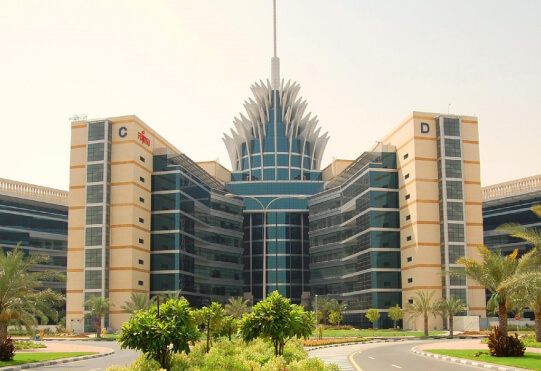On May 6, 2023, the Ukrainian government announced plans to launch the Ukraine Development Fund (UDF), a national development financial institute. The UDF aims to attract and mobilize public and private capital to reconstruct Ukraine. Investment giant BlackRock was appointed by the Ministry of Economy to advise the government on the fund’s launch.
The agreement became a milestone in a series of similar steps to prepare the country for significant reconstruction, reigniting the global discussion on reconstruction among international experts, policymakers, and academics. A staggering price tag of over $750 billion will address the extent of damage to infrastructure, the economy, and communities—a daunting challenge for both Ukraine and the international community.
Notably, the issue of reconstruction first appeared in Ukrainian leaders’ narratives just ten days into the full-scale invasion. President Zelensky’s speeches from mid-March 2022 and on entailed organized rhetoric and a consistent theme on the mechanics of reconstruction. During the Ukraine Recovery Conference in Lugano, the Ukrainian Prime Minister Denys Shmyhal presented a preliminary Recovery and Development Plan in July 2022. The plan was developed with input from the government, international organizations, and local businesses and is now recognized as a reference point for future efforts.
The plan’s objectives are centered on resilience, recovery, modernization, and growth. Key themes include providing economic, social, and environmental resilience, building back better, and not waiting until the war is over. It is widely agreed among Ukrainian officials that reconstruction efforts should not focus on restoring the prewar status, but rather on achieving a leapfrog situation to advance in several stages of economic and governmental development. That includes the development of resilience toward future challenges such as climate change, pandemics, and the ongoing threat posed by Russia.
Despite the continued conflict, Ukraine has already commenced its reconstruction efforts in the areas under government control. It is being conducted by the Ukrainian government, foreign governments, the local private sector, international businesses operating in Ukraine, and individuals. For example, on January 12, 2023, the UNITED24 fundraising platform launched the Rebuilding Ukraine project in Irpin, which aims to restore 18 houses in the Kyiv region and enable 4,237 Ukrainians to return to their homes. Additionally, on April 25, 2023, Prime Minister Shmyhal announced that the government is preparing a complete transformation and replanning of six settlements.
In addition to reconstruction of residential complexes, the government’s efforts are focused on restoring schools, medical institutions, and logistical and energy infrastructure, which suffered the second-highest amount of damage after residential buildings and businesses. This highlights the nature of Ukraine’s reconstruction, which is likely to continue now and beyond victory, with simultaneous efforts in multiple directions rather than a one-sided, sequential approach.
When it comes to financing Ukraine’s reconstruction, the costs are so high that one-party efforts are simply insufficient. Potential funding sources include:
Overall, financing Ukraine’s reconstruction seems more project-based. The international community is not keen on creating a centralized fund to send all finances directly to the Ukrainian government.
The issue of ownership of reconstruction in Ukraine is extremely sensitive. Generally, it is agreed that the government of Ukraine should lead the rebuilding and modernization effort because it is Ukrainian sovereignty itself that has been the target of war. When all is said and done, the rebuilding will likely be a cooperative effort among three main groups:
Drawing on existing literature on post-war and post-disaster reconstruction, establishing an effective reconstruction structure early on is critical to preventing further damage and ensuring a successful outcome.
The main concern of foreign investors and donors, and consequently, the main threat to successful reconstruction, is the corruption level in Ukraine. In the 2021 Corruption Perceptions Index administered by Transparency International, Ukraine measured 32 points ( where 0 means highly corrupt and 100 is clean). Anti-corruption reforms, in particular the laws that guarantee independence of the Anti-Corruption Special Prosecutor, constituted one of the seven EU integration requirements posed by the European Commission to Ukraine in June 2022. The Ukrainian government fulfilled many requirements in this direction, appointing a new head of the Specialized Anti-Corruption Prosecutor’s Office. All progress was highly regarded by the Group of States Against Corruption.
Moreover, the Ukrainian government has been working on updating the regulatory environment to strengthen the country’s institutional capacity and attract investment. That includes implementing new corporate governance legislation, privatization of non-critical enterprises, strengthening intellectual property rights regulation, and developing laws on public-private partnerships.
Many agree that the time has come for the Ukrainian government to step up and take a leadership role, both in vision and action. The upcoming Ukraine Recovery Conference in London in June 2023 is expected to further expedite these efforts.
Without waiting for the end of the war, many interested international investors, developers, construction companies, and other stakeholders are already preparing for large-scale reconstruction. They are studying the market, actively approaching officials, building relationships, defining roles, and identifying primary targets. Some are already making investments in construction-related manufacturing facilities to get ahead of competitors once the war is over. For all stakeholders, including the government, local communities, and the private sector, the reconstruction project of such an unprecedented scale will be a first-time experience, one which will define the country for many years to come.


